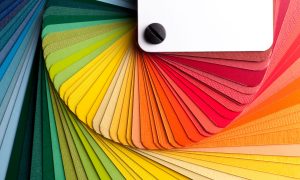Audiences demand visual content. How you approach that content can greatly impact your business.
We’ve heard the saying before: “You don’t get a second chance to make a first impression.” But even in our age of continuous connection–a time when modern technologies allow for 24/7 customer engagement–brands continue to underestimate the importance of making a great first impression. They assume that myriad customer touch points will deliver myriad opportunities to win customer loyalty, but that’s simply not how human nature works.
The human brain is ruled by the primacy effect; that is, a cognitive bias that prioritizes the very first interaction we have with a brand above all else, while informing how we experience that brand going forward.
When information about a brand or service is delivered in a sequence (as any good marketing strategy does), the human brain is far more likely to remember the initial piece of information in that series for the long term, while every other touch point is forgotten in a matter of hours or days. This means that the very first point of interaction with your customer will be the most influential, regardless of what comes next.
Since most audiences today start their relationships with a brand or service digitally, your content will sway that critical first impression above all else. In this case, a picture really is worth a thousand words. Why? Because first impressions of content aren’t motivated by the copy of a skilled wordsmith; instead, 94 percent of first impressions today are guided entirely by the design of that content. That means if you aren’t prioritizing great content design in your customer engagement strategy, then you are likely clouding the customer experience at the offset.
More than ever, it’s your visual content that can make or break the customer experience. Think about it:
- Would you prefer purchasing a product or service from a website that seems straight out of 1999, or one that feels modern and clean?
- Would you want to first learn about a new product through a lengthy whitepaper or a punchy 90-second video?
- Would you follow a brand on social media that relied entirely on stock imagery and text for every post, or the competitor that utilizes high-quality infographics and authentically crafted memes on a regular basis?
If you opted for the latter of the two scenarios in the above questions, then you’re like most people. Still not sure where to get started? Here are three tips to consider:
1. Avoid the Stigma of Stock
According to a Hubspot study on how visual content impacts conversion rates, custom imagery is seven times more likely to convert than stock imagery. That’s because modern audiences value authenticity, a trait that stock imagery can rarely aspire to, simply because it is designed to be generic by nature.
If your content design relies too heavily on stock, your audience may view your brand as cold or disingenuous. Translation? It is worthwhile to invest in something original that differentiates the look and feel of your brand and builds greater trust with your consumers.
2. Keep Things Consistent and Clean
Every content campaign you produce should follow a codified aesthetic direction developed for that campaign. Period.
You may choose to use the same aesthetic direction across multiple campaigns, which is fine, but once you’ve identified a direction, don’t divert from it. The most successful visual content uses no more than three typefaces, a minimal color palette, and the same illustration style throughout every aspect of the campaign.
It is a very common mistake for content creators to mix up illustration styles. This is often the result of relying too heavily on DIY design tools or stock images rather than working with a seasoned illustrator. Do this and the average viewer will get confused or annoyed by the mixed styles even if they do not consciously understand what feels “off” about the content they are looking at, further clouding their view of your brand.
3. Keep Things Bite-Sized & Easy to Digest
Audiences want a frictionless relationship when engaging with brands. Too much text suggests they will have a far more convoluted experience.
According to the Nielsen Norman Group, audiences only read 20 percent of content that exceeds 593 words in length. In addition to this, the bulk of audiences scroll past content that leads with more than a few sentences of text, and bounce out of webpages that have more than a few sentences in the upper fold. A DemandGen study found that 91 percent of modern consumers prefer visual content as their primary, secondary, and tertiary form of information delivery., meaning that brands need to be prepared to cater to today’s average bite-sized consumer appetites.
Successful visual content uses as little text as possible. It’s developed to be viewed on a mobile device or on a social post (sized such that a user doesn’t have to enlarge it to understand). Brands that can deliver a value proposition in short-form, palatable content see far greater success than those that do not.
Design A Great First Impression For Your CX
Brands looking to excite and engage their audiences must prioritize great design to succeed. Done right, thoughtfully designed content tells your customers that your brand is committed to quality, innovation, and an effortless customer experience. After all, it’s that first step on the customer journey–that critical first impression–that will impact the relationship between a brand and its consumers moving forward. Invest in a compelling design strategy and you’ll be sure to nail it on the first try.
The post 3 Ways Visual Content Can Make or Break the Customer appeared first on Entrepreneur
Original source: Entrepreneur






